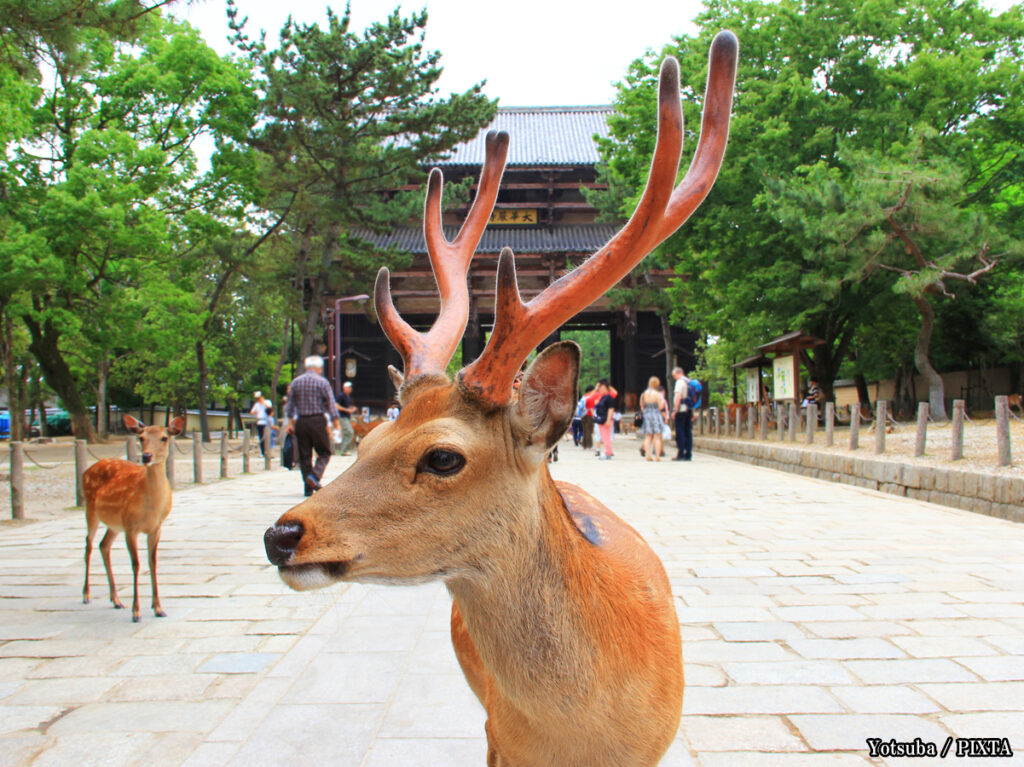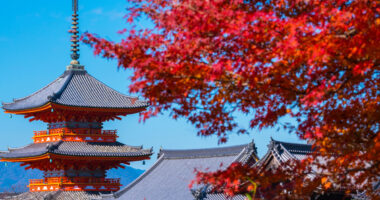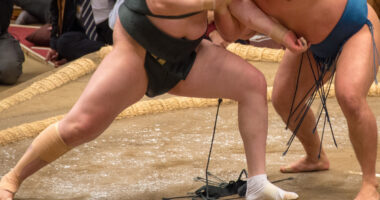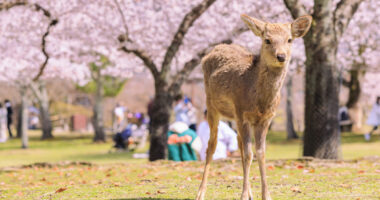A unique sight: free-roaming deer in a Japanese city
Nara, Japan, offers its visitors a one-of-a-kind experience: the chance to see hundreds of wild deer roaming freely along city streets, temple grounds, and public parks, especially in Nara Park. These creatures are not penned in or put on display; instead, they mingle naturally with residents and tourists alike. The quiet normalcy of their presence in such a modern setting often catches first-time visitors off guard, and for many, it becomes one of the most memorable parts of their time in Nara.
More than just tourist attractions: understanding their sacredness
While the deer are undoubtedly a major tourist attraction, their presence in Nara carries far deeper significance. These animals are not merely ordinary wild animals; they are closely connected to the city’s history, culture, and religious beliefs. To truly appreciate Nara, it helps to understand the beliefs that elevated these animals from ordinary wildlife to revered symbols, a status shaped over centuries and rooted in Shinto tradition.
Shinto: deer as divine messengers
Shinto, the indigenous religion of Japan, plays a central role in explaining why the deer are held in such high regard. In this belief system, kami—spirits or gods—are thought to inhabit natural elements, sacred sites, and sometimes animals. These kami often send animal messengers to serve as a bridge between the divine and human realms, and in Nara, the honor was given to the deer.
The legend of Takemikazuchi and the founding of Kasuga Taisha
The most well-known link between Nara’s deer and Shinto beliefs comes from the legend of Takemikazuchi, a powerful deity. According to tradition, when the city’s renowned Kasuga Taisha Shrine was founded, the god Takemikazuchi traveled from Kashima Shrine—his original place of worship—to take up residence there, arriving on the back of a white deer. This story helped establish the deer’s role as sacred creatures serving the kami enshrined at Kasuga Taisha.
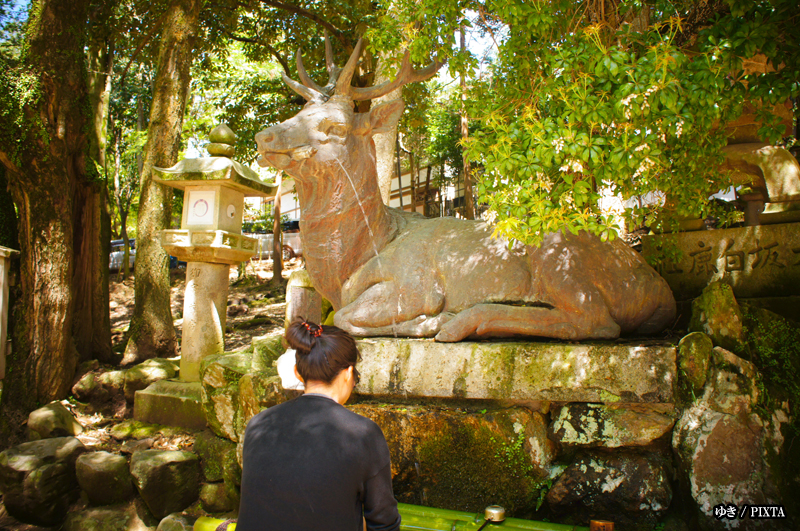
Photo for illustrative purposes
How Shinto beliefs shaped deer protection
Because of this divine connection to Takemikazuchi, the deer came to be treated with exceptional care and reverence. They were regarded as sacred beings, and harming or killing one was considered a serious offense. Over time, these beliefs gave rise to a long-standing tradition of protection and preservation that has been passed down through generations.
A history of reverence: Nara’s deer through the ages
Ancient traditions: early deer protection
The protection of deer in Nara dates back centuries, grounded in the Shinto beliefs described earlier. During the feudal era, the deer enjoyed a special, privileged status, and strict regulations were put in place to shield them from harm. These early rules and practices were more than just religious observance: they marked the beginning of an enduring cultural responsibility, one that continues to shape how Nara cares for its deer today.
From sacred to protected: evolution of deer management
Although the belief in the deer’s sacred role endured, the way they were managed changed over time. As the city of Nara expanded and tourism increased, it became necessary to balance the well-being of the animals with the realities of urban life. Conservation efforts and formal guidelines were introduced not just to uphold tradition, but to address the ever-evolving practical challenges of managing free-roaming deer in a modern city.
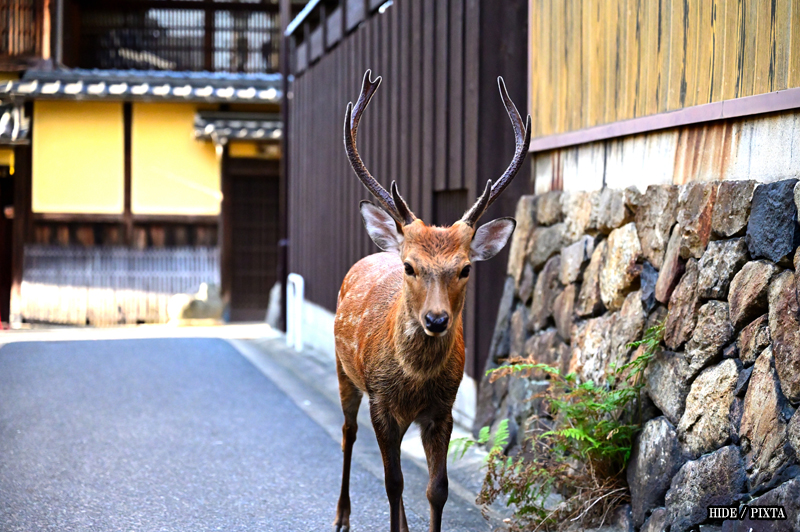
Photo for illustrative purposes
The deer of Nara today: balancing culture and tourism
Why deer are allowed to roam freely
Today, the deer of Nara still roam freely throughout the city, a testament to the city’s commitment to preserving its cultural heritage. Long regarded as a symbol of Nara, the deer are deeply embedded in its identity. Although they are wild animals, they have adapted to close contact with humans and are generally docile and approachable.
Cultural significance beyond the park
The deer’s significance in Nara extends far beyond the boundaries of Nara Park. They appear in local art, souvenirs, and seasonal festivals, reflecting how deeply they are woven into the city’s culture. For residents, the deer are a source of pride and a living reminder of Nara’s history and traditions.
Respecting Nara’s sacred deer
For first-time visitors, seeing deer wander so freely through everyday public spaces can be both surprising and memorable. But these creatures are more than just a photo opportunity—they are wild animals that hold deep cultural and spiritual meaning for the people of Nara. By approaching the deer with respect and awareness, visitors not only help preserve a centuries-old tradition of protection, but also deepen their own experience of Nara and its living cultural heritage.
Visitor information
- Location
- Nara Park and surrounding areas, Kasugano-cho, Nara City, Nara Prefecture
- Access
- About 8 minutes on foot from Kintetsu Nara Station
- About 20 minutes on foot from JR Nara Station
- About 7 minutes by Nara Kotsu Bus (City Loop, Outer Route); get off at “Kencho-mae” bus stop
- Admission
- Open 24 hours, year-round
- Official Website
